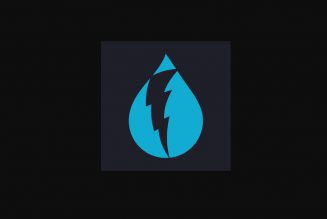
2020 has been a year, not least because much of the world pivoted to remote work. Industries that typically rely on in-person connections, like fitness and religious institutions, found themselves having to engage their audiences through live streams. Ad revenue disappeared from influencers and YouTubers, who are used to working remotely so long as they make money. Fashion influencers whose livelihoods depend on peddling an image of beauty and aspirational clothing were without events to attend or reasons to get dressed. Everyone needed to adapt.
In this piece, we look back on a few people we previously interviewed this year to hear how their remote transition has gone — do they anticipate staying remote? What have they learned from this challenging year? And will we collectively agree to forget 2020 ever happened and try to resume normalcy in 2021?
Check out what they said below, and click through on the posts to read the original pieces mentioning them.
Alyssa Lia Mancao, therapist
What she was up to when we last chatted at the end of March
In March, Mancao began pivoting her therapy Instagram account to address COVID-related stress and anxiety. She had just posted her first couple test posts covering the pandemic, including one called “COVID-19 Compassionate Reminders,” which suggested checking in on friends and family who are immunocompromised and donating to small businesses that might be struggling. She saw her Instagram as a way to reach people who might be interested in therapy but might not be able to financially afford it.
How she’s doing now
Nine months later, Mancao says she’s actually moved her content away from pandemic-related topics because ample information is already available, and “COVID content overload can really exhaust and burn people out.” She’ll post about the pandemic if necessary, though, like when she recently posted about setting boundaries with friends and family who might want to hang in-person.
Although Macao’s business has managed to stay afloat with new clients, she says other therapists she knows have struggled. Clients lost their insurance and income and can no longer afford services.
Many of her clients talk about burnout and the struggle with working, living, and having time off all in the same place: their home. She herself has focused on practicing what she advises, like not working from her bed and finding a routine that works for her.
“This year really taught us to find that balance between staying connected and having boundaries,” she says. Instagram is still a powerful, and free, place for her to spread information, but she’s found that throughout 2020, a post caption doesn’t capture the nuance of every situation and circumstance.
December 9, 2020: Service of Morning Prayer and Reflection
While she decorated her tree this past weekend, Canon Vicar Dana Colley Corsello began praying for past parishioners, friends she’s traveled with, her mother and others who have gifted her ornaments over the years. Dana encourages us to think of and pray for the people in our lives as we string lights and hang ornaments in the coming days. Thank you for joining us for this service of Morning Prayer and Reflection. Your support is appreciated! *Please note that these services are filmed in advance.*
Posted by Washington National Cathedral on Tuesday, December 8, 2020
Kevin Eckstrom, spokesman for the Washington National Cathedral
How the cathedral was doing in April, right before Easter Sunday
Eckstrom and the team at the Washington National Cathedral in Washington, DC, were preparing for virtual Easter services when we last chatted. The team had already been streaming live services on Sundays, but Easter was a major test of their remote work. It’s an essential day for the cathedral, which is typically packed with 3,000 people in the building. The remote operation involved only 10 people in the building at once with the clergy tailoring the service to the pandemic. They took “spiritual” communions in which they consecrated the bread and wine without actually consuming it. They said a special prayer, too, which expressed that they wanted to take communion but couldn’t at that time.
How the church has been doing since
The team is now preparing for Christmas services, and in the months since the pandemic started, the cathedral’s services have reached 1.8 million people and average between 6,000 and 7,500 people streaming Sunday morning services. The cathedral team has focused its live stream efforts on how best to make services resonate remotely, rather than making them an “afterthought.”
“We will be doing essentially two separate versions of the same thing for the foreseeable future, and that’s a kind of a radical shift for us to put as much energy and attention into an online experience as we are into the in-person experience,” Eckstrom says.
Although some global viewers might eventually return to their home church when cities, states, and countries eventually open up, Eckstrom says some attendees say the virtual ceremonies have become a routine they want to continue. The cathedral considers the online world a second location at this point and will continue to stream after the pandemic wanes.
At the same time, however, monetizing the streams hasn’t been easy, especially with no in-person visits. The cathedral anticipates a loss of $5 million this year, mainly because of the lack of tourists buying things in the gift shop and café, and from the loss in event rentals. The team now solicits online donations, and although people have given money, it hasn’t made up for the lack of in-person visitors.
“People want to make a visceral physical connection,” he says. “And that’s really hard to replicate online. We can use some of [the in-person cathedral experience], but not all of it, so we’re really anxious to be able to reopen the door, so that people can have that experience that we’ve been working on developing for about 113 years.”
[embedded content]
Bee Roper and Theo Gove-Humphries, vanlife YouTubers
Where in the world they were at the end of April
Theo Gove-Humphries and Bee Roper had planned, before the pandemic, to fly themselves and their van from the UK to Canada and make their way throughout North America. But as soon as their visas were approved, Canada banned most inbound flights. The UK then shut its borders, too. The couple decided to move into the home of a friend, who themselves was stuck abroad, and focused on writing an ebook about their Scandinavian travels. YouTube sponsorship opportunities slowed down and their ad revenue decreased, so they need to find a way to diversify their income.
Where they are now
Gove-Humphries and Roper say their YouTube revenue is back, and they’re “thriving” on the platform now that everyone is stuck at home and streaming videos. They left the UK as soon as they could and traveled to Portugal where they own property and a barn, which they’ve focused on fixing up. This is the first time they’ve lived in a house in six years.
“Owning the land where we are right now in Portugal was one of our best decisions because living in a van full-time, it’s all fine and well, but I always had that feeling that we never really belonged somewhere, like there was nowhere to fall back on,” says Gove-Humphries. “So having our own land where we can go, where we know that we’re not going to be moved on, or we know that we’re legally allowed to be here, is quite good. Even if you’re not here, it’s good for your mental health to know that you have got somewhere to fall back on, and this worked out brilliantly.”
Roper says multiple people they know, fellow vanlifers, looked into buying their own homes since the pandemic for this same reason.
“It is quite scary when the whole world locks down, and you’ve got no way you’re allowed to be,” she says.
Still, they look forward to traveling again. Their original North America trip is still on the table, but they’re thinking it’ll happen in 2022 rather than next year, realistically.
Katie Baki, yoga teacher
How Katie Baki was teaching at the end of March
Katie Baki almost immediately started hosting donation-based yoga classes on Zoom when the studios she worked at shut down in March. She appreciated being able to see students’ practice when their cameras were on and being able to record classes for later. She managed to set the mood by emailing her students Spotify playlists so they could recreate the yoga class ambiance in their own homes.
How classes have been going since then
Baki now teaches four classes remotely a week for her own clients and two classes for a virtual studio. Her clients have stuck with her throughout the pandemic, which she greatly appreciates, but she says finding new students is “seemingly impossible” without the reach of in-person classes. Plus, she now competes directly with bigger studios that can afford to charge less than her.
“I don’t know if it’s sustainable, to be completely honest,” she says. “I’m sure that there are ways, but the teachers that I’ve spoken with, every yoga teacher is struggling. A lot of them only teach once a week, and a lot of students expect them to be free classes, and our industry got hit really, really hard, and it’s been challenging.”
Zoom classes have more or less acted like a Band-Aid on a large wound for Baki, and she’s ready to get back to in-person classes. She might continue teaching a couple remotely for viewers outside of her area, but otherwise, in-person classes are where she feels both she and the students get the most benefit.
Elizabeth Savetsky, fashion influencer
How she was making fashion content at the end of March
Elizabeth Savetsky’s fashion Instagram feed pivoted quickly when the pandemic took hold in the US. Instead of her usual glitzy looks and fun event photos, she posted herself with minimal makeup and her natural, wavy hair. She sang to her followers, who never knew she had a nice singing voice. She couldn’t rely on the same style or type of content she had been making previously, and couldn’t hire a photographer to help her take photos. At the same time, she had to strike the right tone and figure out what her followers wanted — they loved her luxurious, cool looks before, but would they still want that when they were all at home wearing sweatpants?
How she’s adjusted to the pandemic’s fashion trends
After months of being stuck at home, Savetsky says her followers seemingly want lighthearted, aspirational content again. She participated in her first professional photoshoots in around six months recently and says her followers crave a fantasy world where they could be dressing up and celebrating the holidays.
“People aren’t traveling,” she says. “People aren’t getting to do their normal holiday season glamorous gatherings and parties and all of that, and so to be able to give them a little bit of that on Instagram is, that’s kind of [my] angle.”
That’s only the Instagram grid, however. Savetsky says throughout the pandemic she’s given her followers a peek into her real life, and they likely will want that to continue. The brands want that, too. Savetsky says the brand deals are coming back to her account but now involve more focus on her struggles and day-to-day life. Her followers are buying from her posts, too, she says, which she thinks reflects the lack of spending in other areas of their lives, like travel.
“I feel like my audience really responds to this real factor. It’s nice to have the fantasy, but it’s not relatable, and people want to see your everyday life, especially when the world is hurting,” she says. “I think it’s kind of shown me that it’s not about the setting, or about the product, but it’s about me, and people wanting a window into my life.”










